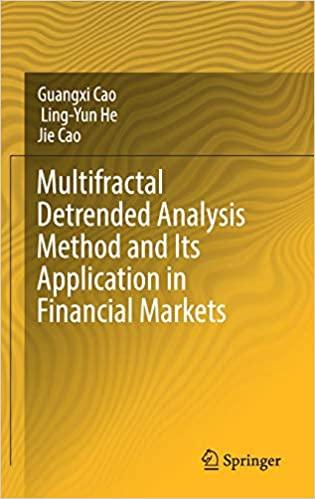Answered step by step
Verified Expert Solution
Question
1 Approved Answer
ANSWER ALL QUESTIONS 1. Explain the concept of the profitability index (PI) as a capital budgeting tool. How does it complement other methods like NPV
 ANSWER ALL QUESTIONS 1. Explain the concept of the profitability index (PI) as a capital budgeting tool. How does it complement other methods like NPV and IRR? Provide a practical example to demonstrate its application. 2. Discuss the importance of risk in capital budgeting decisions. How can firms incorporate risk into the capital budgeting process, and what techniques or adjustments can be used to account for uncertain future cash flows? 3. Analyze the role of the modified internal rate of return (MIRR) in capital budgeting. How does MIRR address some of the limitations of traditional IRR? Discuss its suitability for investment appraisal in the corporate context. 4. Discuss Evaluate the use of sensitivity analysis and scenario analysis in capital budgeting. How can these techniques help firms assess the impact of varying assumptions and market conditions on investment projects? 5. Discuss the concept of financial leverage and its role in capital structure decisions. How does financial leverage affect a company's risk and profitability, and what are the trade-offs involved? 6. Analyze the Modigliani-Miller theorem and its implications for capital structure decisions. Under what assumptions does the theorem hold, and what are the real-world limitations of this theory? Page 1 of 2 7. Explore the impact of taxation on capital structure decisions. How do tax shields and the deductibility of interest expenses influence a firm's choice between debt and equity financing? 8. Explain the concept of the weighted average cost of capital (WACC) and its role in capital structure decisions. How can a firm's WACC be optimized to maximize shareholder value? 9. Discuss the trade-off theory of capital structure. What does this theory suggest about the optimal level of debt in a company's capital structure, and how does it balance the costs and benefits of debt? 10.Examine the pecking order theory of capital structure. How does this theory explain a firm's financing preferences and the information asymmetry between managers and investors
ANSWER ALL QUESTIONS 1. Explain the concept of the profitability index (PI) as a capital budgeting tool. How does it complement other methods like NPV and IRR? Provide a practical example to demonstrate its application. 2. Discuss the importance of risk in capital budgeting decisions. How can firms incorporate risk into the capital budgeting process, and what techniques or adjustments can be used to account for uncertain future cash flows? 3. Analyze the role of the modified internal rate of return (MIRR) in capital budgeting. How does MIRR address some of the limitations of traditional IRR? Discuss its suitability for investment appraisal in the corporate context. 4. Discuss Evaluate the use of sensitivity analysis and scenario analysis in capital budgeting. How can these techniques help firms assess the impact of varying assumptions and market conditions on investment projects? 5. Discuss the concept of financial leverage and its role in capital structure decisions. How does financial leverage affect a company's risk and profitability, and what are the trade-offs involved? 6. Analyze the Modigliani-Miller theorem and its implications for capital structure decisions. Under what assumptions does the theorem hold, and what are the real-world limitations of this theory? Page 1 of 2 7. Explore the impact of taxation on capital structure decisions. How do tax shields and the deductibility of interest expenses influence a firm's choice between debt and equity financing? 8. Explain the concept of the weighted average cost of capital (WACC) and its role in capital structure decisions. How can a firm's WACC be optimized to maximize shareholder value? 9. Discuss the trade-off theory of capital structure. What does this theory suggest about the optimal level of debt in a company's capital structure, and how does it balance the costs and benefits of debt? 10.Examine the pecking order theory of capital structure. How does this theory explain a firm's financing preferences and the information asymmetry between managers and investors Step by Step Solution
There are 3 Steps involved in it
Step: 1

Get Instant Access to Expert-Tailored Solutions
See step-by-step solutions with expert insights and AI powered tools for academic success
Step: 2

Step: 3

Ace Your Homework with AI
Get the answers you need in no time with our AI-driven, step-by-step assistance
Get Started


